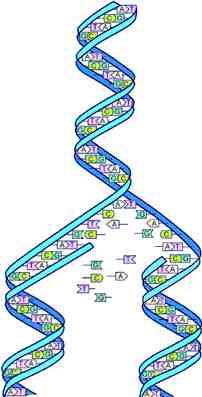The bugs in your family tree
by Tom Mason
YOUR MOTHER IS RELATED TO a venereal disease. It isn’t just an edgy insult. It’s the truth.
Not that there’s much of a family resemblance, but the tiny organisms swimming around in Dr. Andrew Roger’s microscope known as Trichomonas vaginalis are our distant relatives nevertheless. Very distant. These tiny one-celled organisms and the creatures that would one day evolve into humans diverged onto separate evolutionary pathways more than a billion years ago in a primordial melange known as the Paleoproterozoic era. While we were painstakingly becoming mammals that would eventually fly to the moon and crack the human genetic code, T. vaginalis quietly evolved into a human sexually transmitted disease. Now Roger and his Dalhousie University associate Dr. Ford Doolittle are trying to understand why.
Roger has determined the ancestry of T vaginalis and humans through careful DNA analysis. Now there’s another question he’d like to answer. How did T. vaginalis manage to evolve into an organism that lived in humans, when humans wouldn’t even be around for over a billion years? “Since this organism evolved long before humans existed, we want to understand how it adapted from a free living organism to become a human parasite,” says Roger. “What genetic mechanisms came into play.”
It’s hard to imagine anything less human. For one thing, T vaginalis can live very nicely without oxygen — not a common trait in organisms. And while they have thousands of genes in their genetic blueprints, they are far less complex than a fruit fly or a worm.
From their laboratory at Dalhousie University’s School of Medicine, Roger and Doolittle are studying an assortment of creatures in their microscopic zoo, including a parasite that lives in Atlantic salmon and the bug that causes malaria, still one of humankind’s most serious diseases. The goal is to construct a library of genetic codes similar to that of the human genome project. By comparing a similar sequence of four genes from many of the major groups of organisms on earth, they hope to discover how these organisms relate to each other. Already they have made significant discoveries, including proof that animals and fungi are each other’s closest relatives and that green plants and algae all inherited their ability to convert sunlight into energy from a single bacterium.
In some respects, Roger’s work is a broad spin-off of the human genome project, the study that succeeded in mapping out the human DNA sequence. “Many of the techniques we are using in our work were developed to study the human genome,” he says.
It’s more than pure science. The research could eventually lead to new ways of developing drugs to fight disease. For example, the microscopic creature that causes malaria actually has some photosynthetic plant organelles within its cell structure. Roger predicts that scientists may be able to develop drugs that target and destroy those particular organelles without damaging the human patient. “Since humans don’t photosynthesize sunlight, a drug that only targets that particular organelle would probably be very safe to use.”
But the practical applications are mostly P.R. spin. Roger really wants to answer one fundamental question — how did life on earth evolve? That’s where T vaginalis comes in. It’s a living fossil, barely changed from ancestors that swam in Earth’s primordial soup. “These creatures are our most distance relatives. By studying them we may someday be able to understand the process where they came from.”

